|
Important PSA brought to you by NYC artists and advocates @saralynne.leo @youarenotalonemurals and @dirtybandits: You Are Not Alone
Whether you’re yearning for a past, lost, or future love, feeling touched out but lonely, recovering from Covid, experiencing burnout with seasonal sensory overload or #fomo, overwhelmed by the state of your household and/or the world at large, or simply just can’t take the heat…trust that this season passes like all others, support is available, and you are not alone in your struggles. #summer #blues #fomo #mentalhealthmatters #community #artheals #lonely #overload #seasonalaffectivedisorder #electionanxiety Post by Sharon Itkoff Nacache ATR-BC LCAT LPAT PMH-C
0 Comments
 Much of my work as a perinatal therapist is about creating a safe space to bring unacceptable feelings out into the full light of day, and then clarifying, validating, and destigmatizing them together. It takes a great deal of emotional labor to debunk the deeply woven myths of motherhood we’ve internalized, many of which begin in our own childhoods from our first encounter with a babydoll. Narratives around how a birthing person or caregiver is SUPPOSED to feel at any stage in their family building journeys are often baked with gooey layers of guilt, shame, and impossible expectations, leaving parents feeling they have to hide their struggles in the shadows to avoid being seen as “bad,” and prolonging their healing process. While perinatal mood and anxiety disorders (PMADS) involve struggling with dark thoughts to the extent that it impacts the ability to care for oneself or their baby and thus require professional support, there are many other “normal,” very triggering, yet still taboo topics that plague new parents. These experiences are incredibly common yet often felt in isolation, compounding the pain of their impact. To name a few: Gender disappointment, different bonding experiences with second babies as opposed to first, grappling with a less than ideal birth experience, slow attachment formations after a traumatic birth, feeling estranged from one’s body while pregnant/postpartum/breastfeeding, resentment toward the non-birthing partner, dread around having to do this all over again, disliking the newborn stage even after wanting a baby so baby. Ambivalent feelings often involve some kind of “shadow loss,” which are losses we experience in life, as opposed to experiencing an actual loss of life. These hopes, dreams, and disappointments deserve to be seen, named, and then properly mourned, since we all have fantasies around creating our own imaginary families someday. In one of my favorite poems, Rumi writes, “The dark thought, the shame, the malice, meet them at the door laughing, and invite them in. Be grateful for whoever comes, because each has been sent as a guide from beyond.” What if we could make space for all of our feelings–the “good, bad, and ugly”? What if we approached them with compassion and curiosity, as teachers with sometimes hidden messages, instead of judgment? Post and Artwork by Sharon Itkoff Nacache ATR-BC LCAT LPAT PMH-C Had a fabulous time co-presenting at today's BrainMind Summit NYC as part of the Arts Passport experience hosted at the Whitney Museum of American Art. It was inspiring to meet so many creative innovators from various disciplines who all share a deep belief in the healing power of the Arts. (And you know the stars have aligned when you end up matching everything around you, from the book you're reading to the flowers outside!) #synchrony #artheals #artsinmedicine #arttherapylife #creativeresilience #artcenteredpractice
Post by Sharon Itkoff Nacache ATR-BC LCAT LPAT PMH-C Wow! What an inspiring morning sharing our Art-Centered Practice of Care with fellow creatives and museum professionals at the New York City Museum Educators Roundtable conference at Columbia University Teacher's College in NYC. Thank you to my Whitney Museum of Art dream team, Cris Scorza and Reyhaneh Gheydi for your shared creative vision and supportive collaboration. #intersectional #arttherapy #museumeducation #artheals #mentalhealthawarenessmonth Post by Sharon Itkoff Nacache ATR-BC LCAT LPAT PMH-C Photos courtesy of Cris Scorza and NYCMER conference staff
I had so much fun yesterday discussing #creativeresilience and #burnoutprevention in #familybuilding and running a #privatepractice on "The Creative Psychotherapist Offical Podcast," Season 3 Episode 13 with my fabulous colleague, Reina Lombardi, MA, ATR-BC, ATCS, LMHC-QS. It feels especially poignant that we were able to explore some of these vital issues during Mental Health and Maternal Mental Health Awareness month.
The episode is also available on your favorite podcast player by searching the title: The Creative Psychotherapist. Please share with any friends and colleagues who may be interested! #arttherapy #podcast #perinatalmentalhealth #caregiverburnout #creativeresilience #privatepractice #mentalhealthawarenessmonth #maternalmentalhealthawarenessmonth 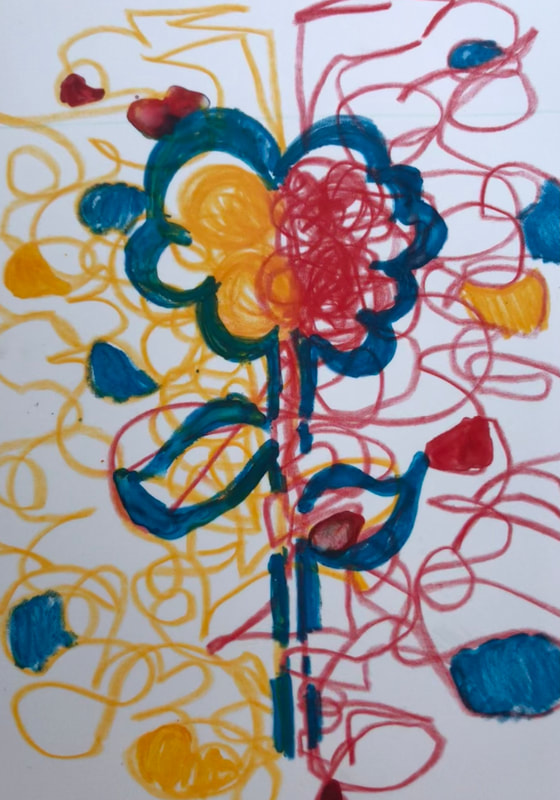 With last week’s mini earthquake in NYC and the surrounding tri-state area, and today’s solar eclipse literally on the horizon, it can feel both exciting and unsettling to experience natural phenomena that are outside of our control. Today during a session I was inspired to try a bilateral drawing exercise and was reminded how good it can feel to get out of our comfort zones–especially within the safety of the art therapy space. Bilateral drawing engages both the dominant and non-dominant hand in the simple act of scribbling while adapting a mindful, nonjudgmental attitude of curiosity to focus on the sensory, tactile aspects of mark making, and what is emerging emotionally or creatively. I learned several bilateral techniques from a skilled art and yoga therapist, Karen Gibbons, many years ago, and felt inspired to bring it in this morning as a creativity development activity and “ice-breaker” to get us in a creative mindset. There are many ways to try this, in my case we first scribbled with both hands and then used a new color and dominant hand to bring out a representational image from the abstract, reflecting on the entire process after. Intentionally doodling with both hands can feel fun and a bit strange, but also has many therapeutic properties. From a clinical standpoint it can aid in tolerating anxiety and building self compassion around perfectionistic tendencies and a harsh inner critic. Additionally, bilateral stimulation engages both hemispheres of the brain, connecting "thinking" to feeling," which can feel deeply grounding and promote self- regulation, including for those who have experienced trauma. If you’re in need of some extra grounding, creative inspiration and/or self care these days, grab yourself a piece of paper, two different colored pencils/crayons, and give it a try! Art and Post by Sharon Itkoff Nacache ATR-BC LCAT LPAT PMH-C Last week’s creative wellness workshops for staff at Rikers Island marked a true highlight in my 15 year career as an art therapist. Despite my best intentions, I came with my own defenses and biases that had been influenced by news headlines and former colleagues. I expected a cold, hardened, and heavily defended atmosphere where I would have to work hard to create a sense of safety for any kind of authentic creative expression to take place. And yet, I was humbled to see how quickly the correction officers, dietitians, mental health professionals, and maintenance staff in attendance embraced the opportunity to share who they were and what they cared about with their colleagues, some of whom they were meeting for the first time. Through creative warmup, art observation, writing, and art-making exercises, I was introduced to new mothers adjusting to ‘round the clock caretaking demands, proud clergy leaders devoted to their congregation, hardworking volunteers with at-risk youth in their communities, musicians, eager fiancés, and devoted pet “parents.”
Collaging with mixed media inspired by a contemporary abstract artist allowed for further self expression and connection to one another, with self portraits, symbols of hope, and representations of life stage transitions emerging. There was a textured metallic wedding dress for a glowing bride-to-be, a vibrant crown made up of resilience and self love from a deeply grieving granddaughter, and a smiling robot hinting at how demanding and dehumanizing working within “the system” can feel. Pat Allen, art therapy pioneer and co-founder of the open studio process adapted for these workshops writes, “Imagination is the deepest voice of the soul and can be heard clearly only through cultivation and careful attention. A relationship with our imagination is a relationship with our deepest self.” It was a true gift to be able to witness some of NYC’s boldest tap into and share a part of their inner worlds. Post by Sharon Itkoff Nacache ATR-BC LCAT LPAT PMH-C  Art therapy, like the creative process itself, is complex, multifaceted, not easy to define. It falls into an ambiguous gray area that both intrigues and unsettles folks. It is an integrative mental health profession weaving together Fine Arts training, developmental psychology, counseling techniques, and a therapeutic relationship to support individuals of all ages and backgrounds in dealing with mental illness, traumatic experiences, interpersonal conflict, daily stressors, medical diagnoses, addictive behaviors, life stage transitions, grief and loss, and so much more. Mattel just released a Barbie Art Therapy Playset available at Target, that includes a therapist and “patient” doll along with a cheerful childlike painting, mini art supplies, “mood stickers” and even a pet cat. The dolls are making waves in the art therapy community, with some clinicians celebrating the representation of our field as an opportunity to educate the public. They note the diverse careers Barbie dolls have featured since their inception in 1959, ranging from lawyers and astronauts to beekeepers and park rangers. Others, including several pioneers of the profession, are cringing at the lack of nuance and diversity in the scene portrayed since the public already oversimplifies and associates art therapy with finger painting with children. They feel this further devalues and commodifies the field, similar to so-called art therapy activity and coloring books dominating the online marketplace. The reactions and projections abound. Personally, I feel the tension too. I’m excited for a new platform to spread awareness about the field, but shy away from kooky cat lady/wacky art teacher stereotypes or contexts that fit us into a (literal) box. But perhaps this is part of the larger paradox of any attempt to represent the modern woman. The recent “Barbie” movie poignantly describes this impossible task of being a woman in today’s world: “We have to always be extraordinary, but somehow we're always doing it wrong. You're supposed to love being a mother, but don't talk about your kids all the damn time. You have to be a career woman but also always be looking out for other people. But always stand out and always be grateful. But never forget that the system is rigged. So find a way to acknowledge that. And it turns out in fact that not only are you doing everything wrong, but also everything is your fault. And if all of that is also true for a doll just representing women, then I don't even know.” #arttherapy #barbie #feminism Post by Sharon Itkoff Nacache ATR-BC LCAT LPAT PMH-C Hello community!
I’m excited to announce my upcoming Spring cycle of Becoming: Virtual Art Therapy Group for Pregnancy Support, beginning March 18, 2024 from 12-1p. This is a space for all gestational birthing persons to explore this intense bio-psycho-social-spiritual transition through a safe, trauma-informed, and creative lens. Whether it is a first pregnancy, high-risk pregnancy, pregnancy after loss, expecting parent of older children, etc...all experiences are welcome. We will be using an open studio process model that is gently structured and allows participants to be both seen and heard through both verbal and creative processing. It requires absolutely no artistic experience other than the availability of basic art supplies and a willingness to try something new. It can be a stand-alone treatment or complement existing individual psychotherapy work. Group goals include:
Brass Tacks:
|



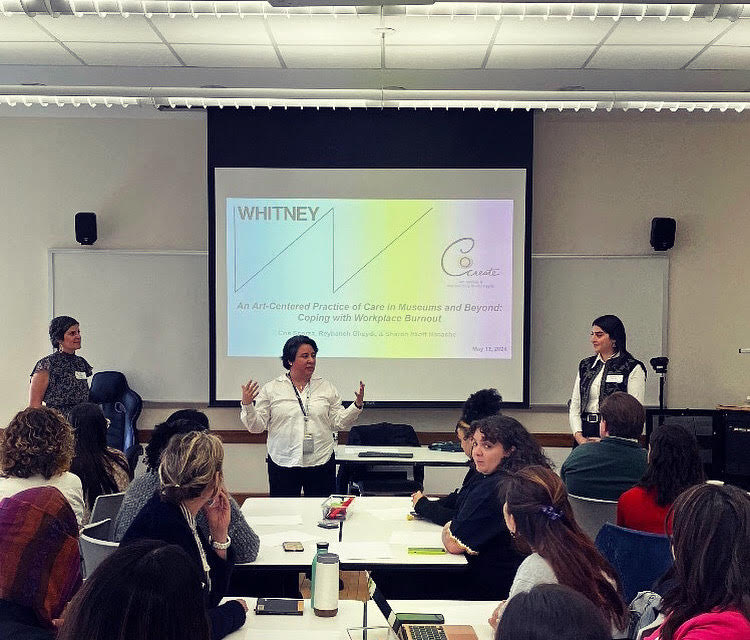
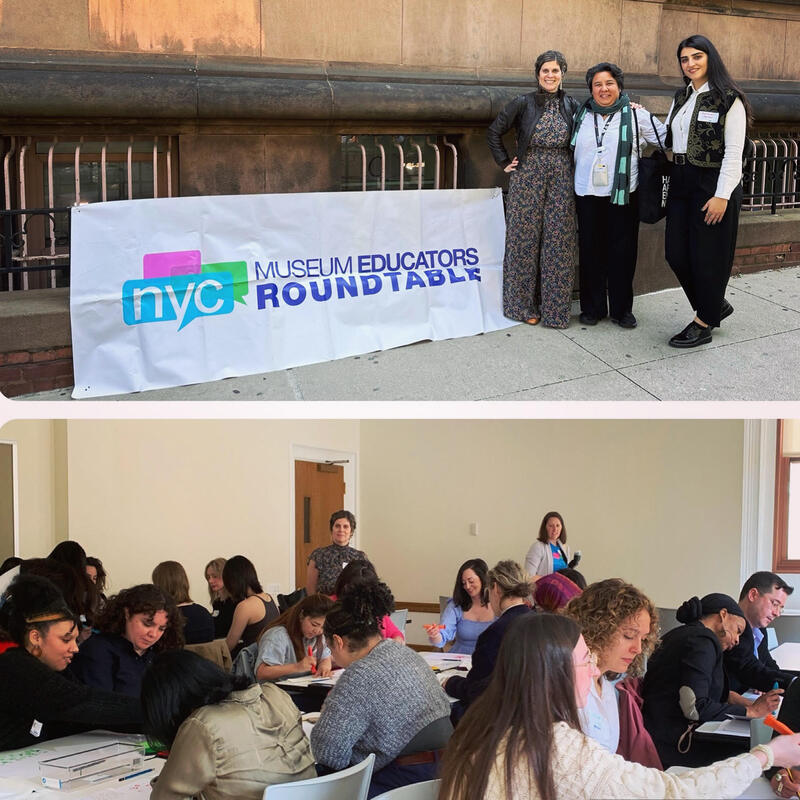
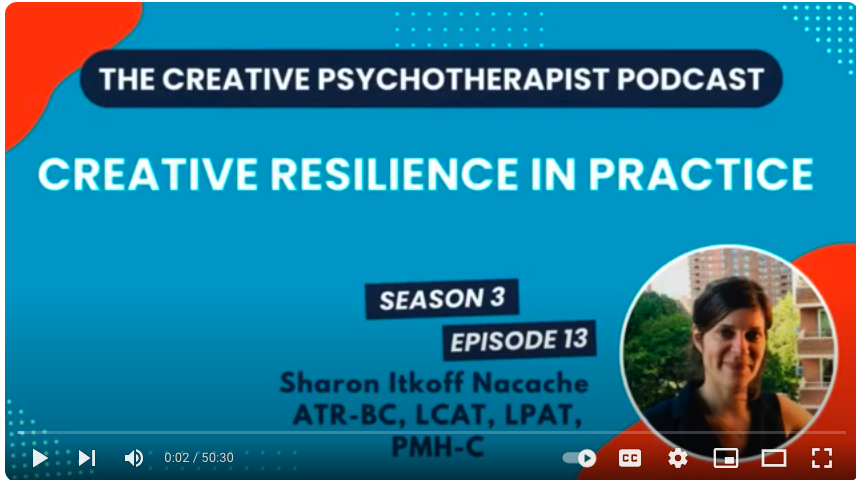
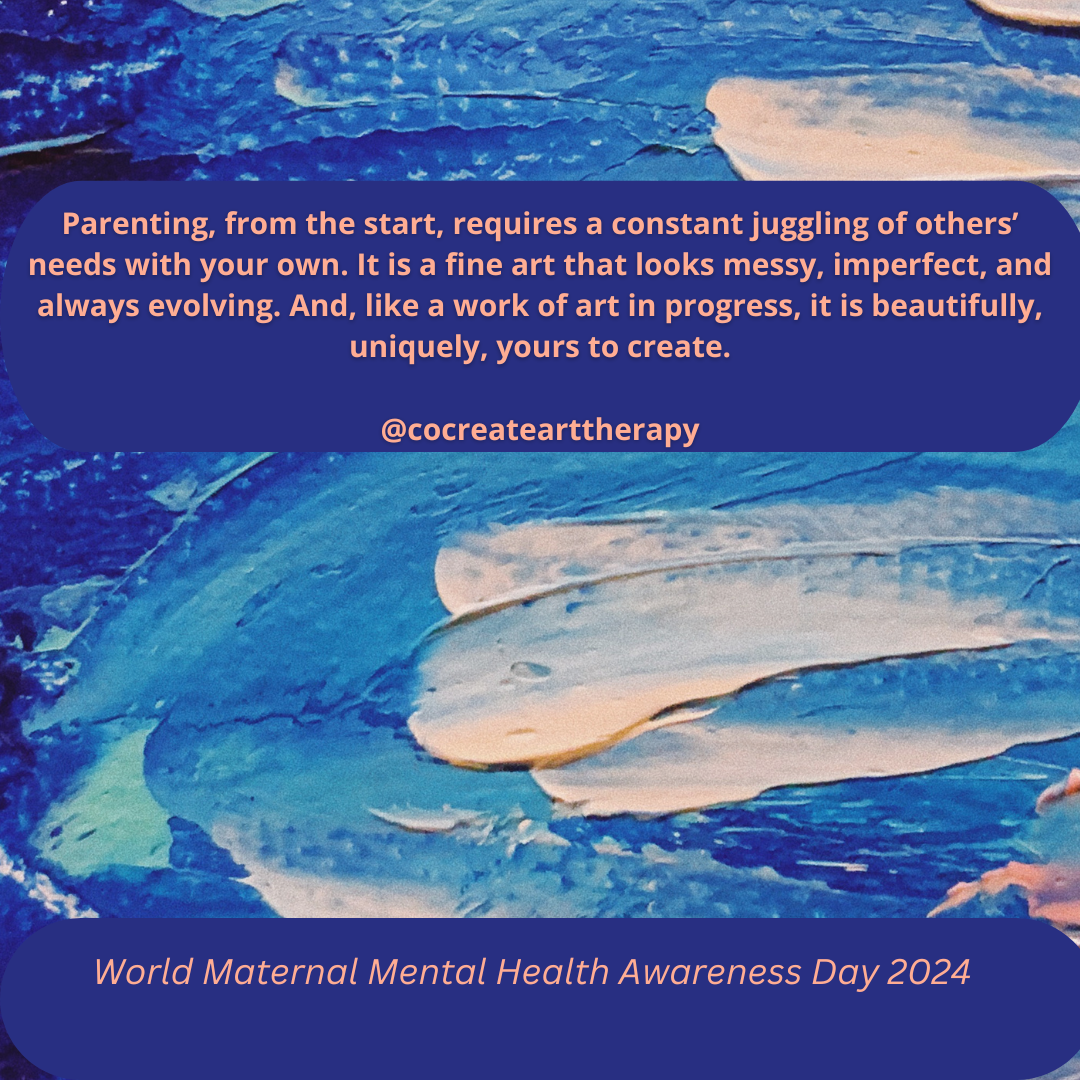
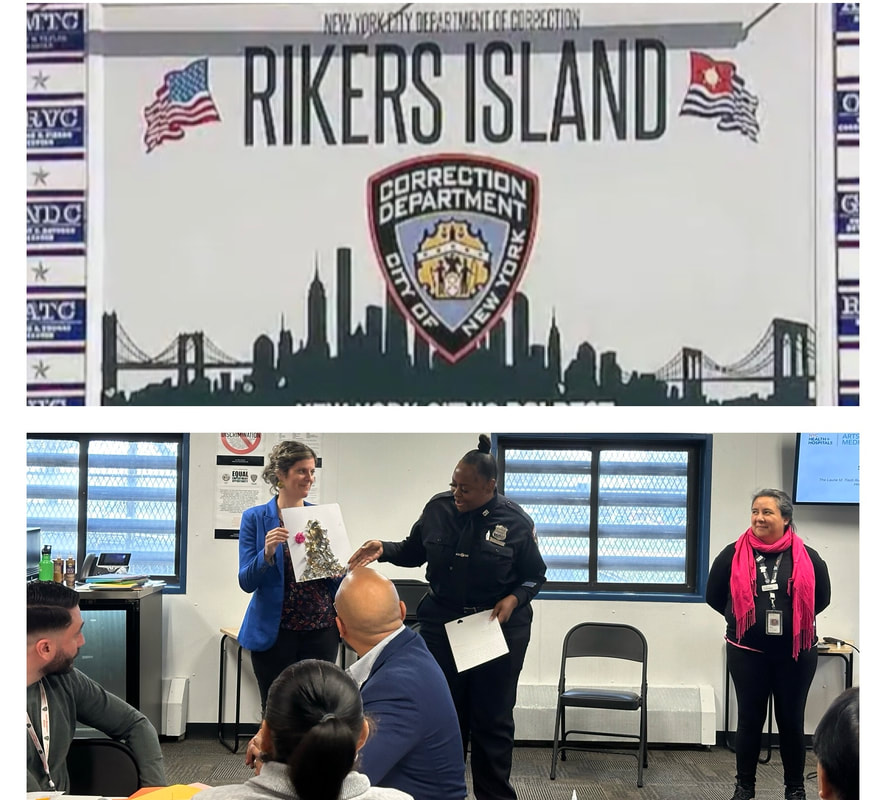
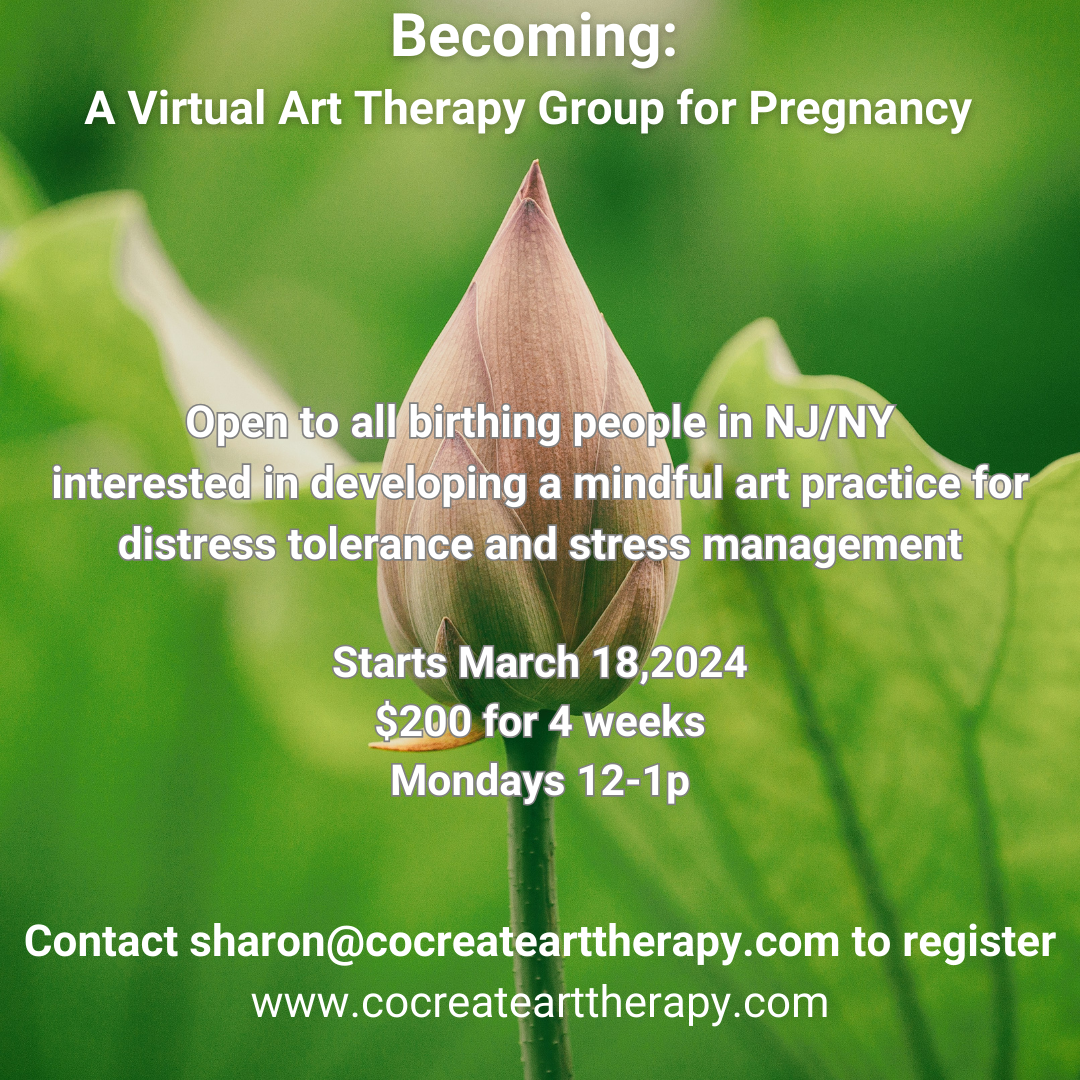
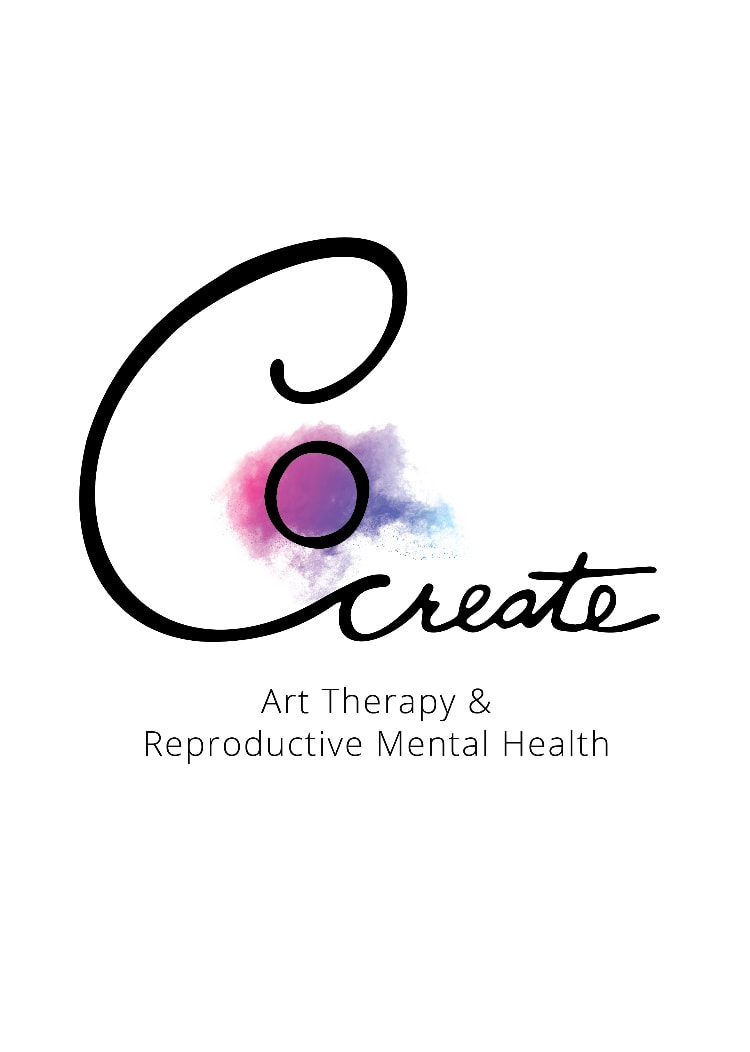
 RSS Feed
RSS Feed